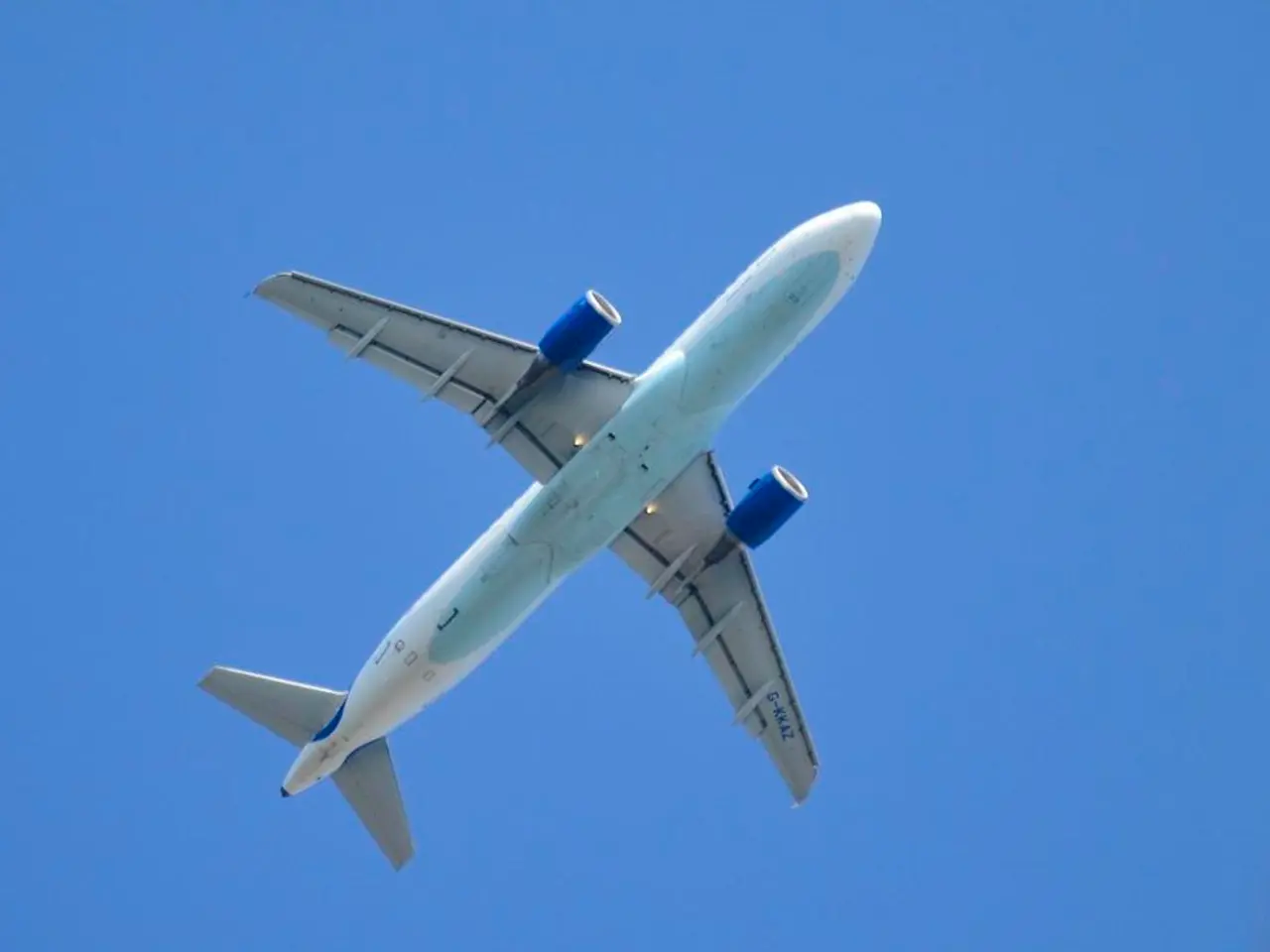Technology-Driven Farming Equipment: Strategies Minimizing Resource Consumption Whilst Boosting Crop Production
In the realm of agriculture, a technological revolution is underway. Known as precision agriculture or precision farming, this innovative approach is transforming the way farmers manage their crops, promoting sustainability and environmental stewardship.
Precision agriculture employs technology such as sensors, satellites, GPS-guided equipment, and data analytics to optimize the use of resources like water, fertilizers, and pesticides with remarkable accuracy. This approach allows farmers to make informed decisions based on real-time data, through integrated dashboards, mobile apps, and IoT sensors [1][3].
One of the key benefits of precision agriculture is its contribution to sustainability and water conservation. By applying agricultural inputs more efficiently and accurately, it reduces overuse and waste. For instance, precision irrigation techniques and sensor-based fertigation in organic farming have been shown to reduce water consumption by up to 30% without compromising yields [2]. Similarly, precision crop farming helps reduce the use of fertilizers and plant protection products, thus minimizing nutrient runoff and pollution [4].
Precision agriculture also offers smarter irrigation systems that can reduce water use by 20 to 40% while maintaining or improving yields [5]. Automation in precision agriculture can lower the need for long hours of repetitive, physically demanding work, reducing the risk of repetitive strain injuries (RSIs) for farmers and their teams [6].
GPS-guided machinery in precision agriculture helps reduce overlap, optimize every pass across the field, and lower fuel consumption [7]. Drones and satellite imaging offer farmers a bird's-eye view of their crops, helping them monitor crop health, spot pest or disease outbreaks early, and assess which areas might need more attention [8].
Precision agriculture is not confined to large-scale agribusiness; it is transforming farms of all sizes, helping producers make smarter choices and reduce environmental impact. With real-time data at their fingertips, farmers can make on-the-spot decisions, improving the efficiency and effectiveness of their farming operations [1][4].
Moreover, precision agriculture helps farmers adapt to climate change by allowing them to respond to environmental challenges such as erratic rainfall, early frosts, and shifting growing zones. This adaptability is crucial in ensuring food security as our climate continues to change [9].
By choosing food grown with precision ag equipment or supporting sustainable farming practices, consumers are playing a part in reshaping food production and reducing environmental impact. Rose Morrison, an advocate for environmental responsibility with eight years of experience in the construction, home, and lifestyle space, encourages this shift. Currently serving as the managing editor at Renovated.com and the founder of The Landscape Guide, Rose is dedicated to providing actionable tips and commentary on environmentally responsible living, aligning with Greener Ideal's mission [10].
The global intelligent landscaping system market, including tools like drip systems and remote moisture sensors, is projected to grow from $265.42 million to $2.45 billion by 2033 [11]. This growth underscores the increasing recognition and adoption of precision agriculture as a promising option for feeding a growing population while minimizing the use of fossil fuels and chemicals [12].
Technology is indeed revolutionizing agriculture, with 12 key innovations enhancing efficiency and sustainability, such as smart greenhouses and CRISPR gene editing [13]. Precision agriculture is at the forefront of this revolution, offering a brighter future for farming, the environment, and consumers alike.
References:
[1] Precision Agriculture: Definition, History, and Principles. (2021). PrecisionAg.com. Retrieved from https://www.precisionag.com/precision-agriculture-definition-history-and-principles/
[2] Sustainable Irrigation: Precision Irrigation. (2021). Water Use Efficiency. Retrieved from https://www.wue.org/sustainable-irrigation-precision-irrigation
[3] Precision Agriculture: Principles and Practices. (2020). CropLife International. Retrieved from https://www.croplifeinternational.org/knowledge-resources/precision-agriculture-principles-and-practices/
[4] Precision Agriculture: Reducing Environmental Impact. (2021). The Nature Conservancy. Retrieved from https://www.nature.org/en-us/get-involved/how-to-help/farming-and-food/precision-agriculture/
[5] Smarter Irrigation Systems. (2021). The Water Council. Retrieved from https://thewatercouncil.com/smart-irrigation-systems/
[6] Automation in Precision Agriculture. (2021). AgriWebb. Retrieved from https://www.agriwebb.com/agriculture-technology/automation-in-precision-agriculture/
[7] Precision Agriculture: GPS-Guided Machinery. (2021). Ag Leader Technology. Retrieved from https://www.agleader.com/precision-agriculture/gps-guided-machinery/
[8] Drones and Satellite Imagery in Precision Agriculture. (2021). Trimble. Retrieved from https://www.trimble.com/precision-agriculture/drones-and-satellite-imagery/
[9] Precision Agriculture and Climate Change. (2021). CropLife International. Retrieved from https://www.croplifeinternational.org/knowledge-resources/precision-agriculture-and-climate-change/
[10] Rose Morrison. (2021). LinkedIn. Retrieved from https://www.linkedin.com/in/rosemorrison/
[11] Global Intelligent Landscaping System Market to Reach $2.45 Billion by 2033. (2021). Yahoo Finance. Retrieved from https://finance.yahoo.com/news/global-intelligent-landscaping-system-market-reach-223800193.html
[12] Precision Agriculture: A Promising Option for Feeding a Growing Population. (2021). CropLife International. Retrieved from https://www.croplifeinternational.org/knowledge-resources/precision-agriculture-a-promising-option-for-feeding-a-growing-population/
[13] 12 Key Innovations Transforming Agriculture. (2021). AgFunder. Retrieved from https://agfunder.com/innovations/12-key-innovations-transforming-agriculture/
- Precision agriculture, revolutionizing agriculture, employs technology such as environmental-science principles, like sensors, satellites, GPS-guided equipment, and data analytics, to promote sustainability and conservation.
- By applying agricultural inputs more efficiently and accurately, precision agriculture in the domain of environment conservation helps reduce water consumption and overuse, contributing significantly to water conservation.
- Science-backed technologies in precision agriculture, including smarter irrigation systems and automation, are not only reducing fuel consumption and labor-intensive work but also minimizing the use of harmful fertilizers and plant protection products.
- Adaptation to climate change is one of the key benefits of precision agriculture, as it allows farmers to monitor crops and make real-time decisions based on data, empowering them to respond to environmental challenges like erratic rainfall and shifting growing zones, ultimately supporting food security and climate-change mitigation efforts.




